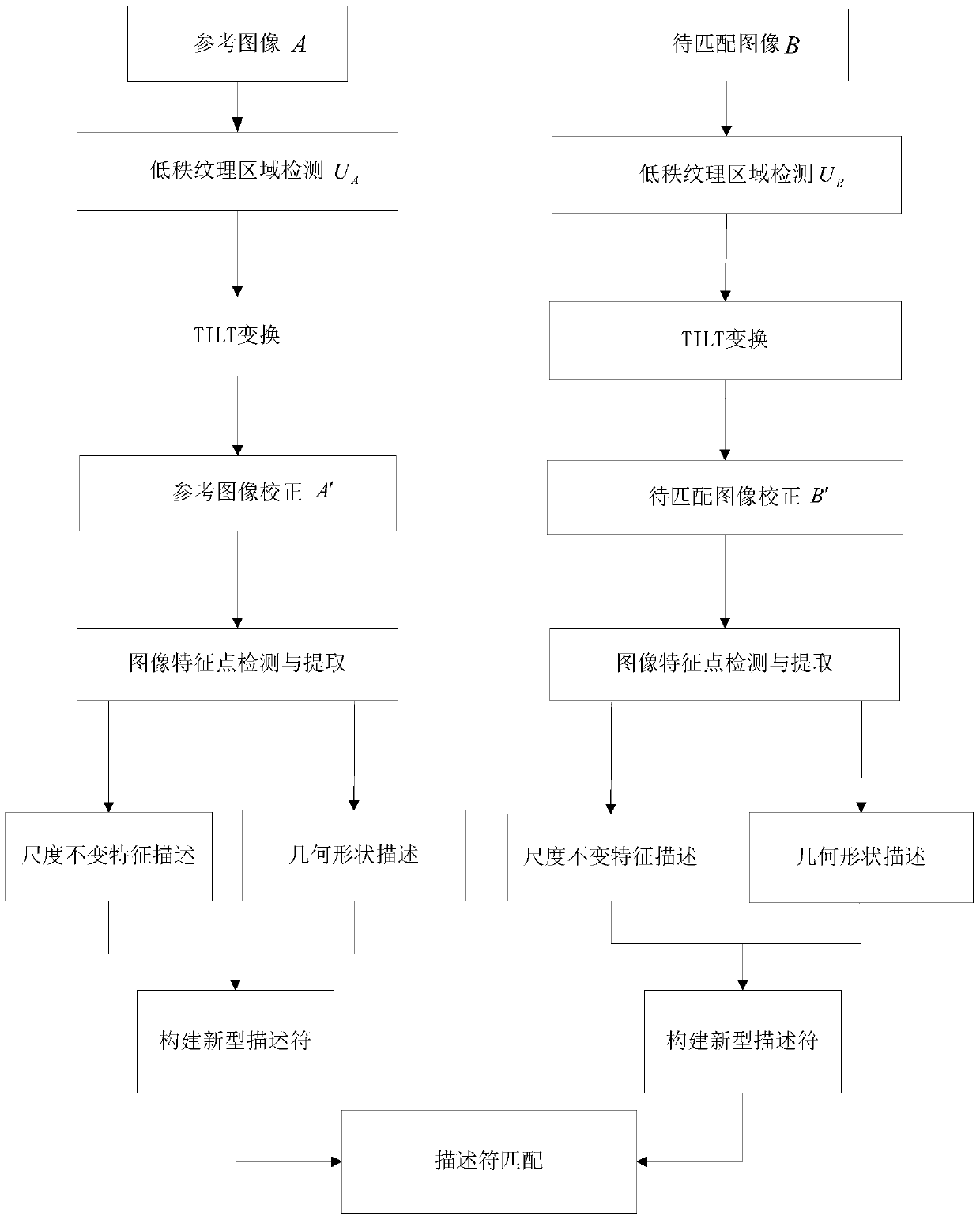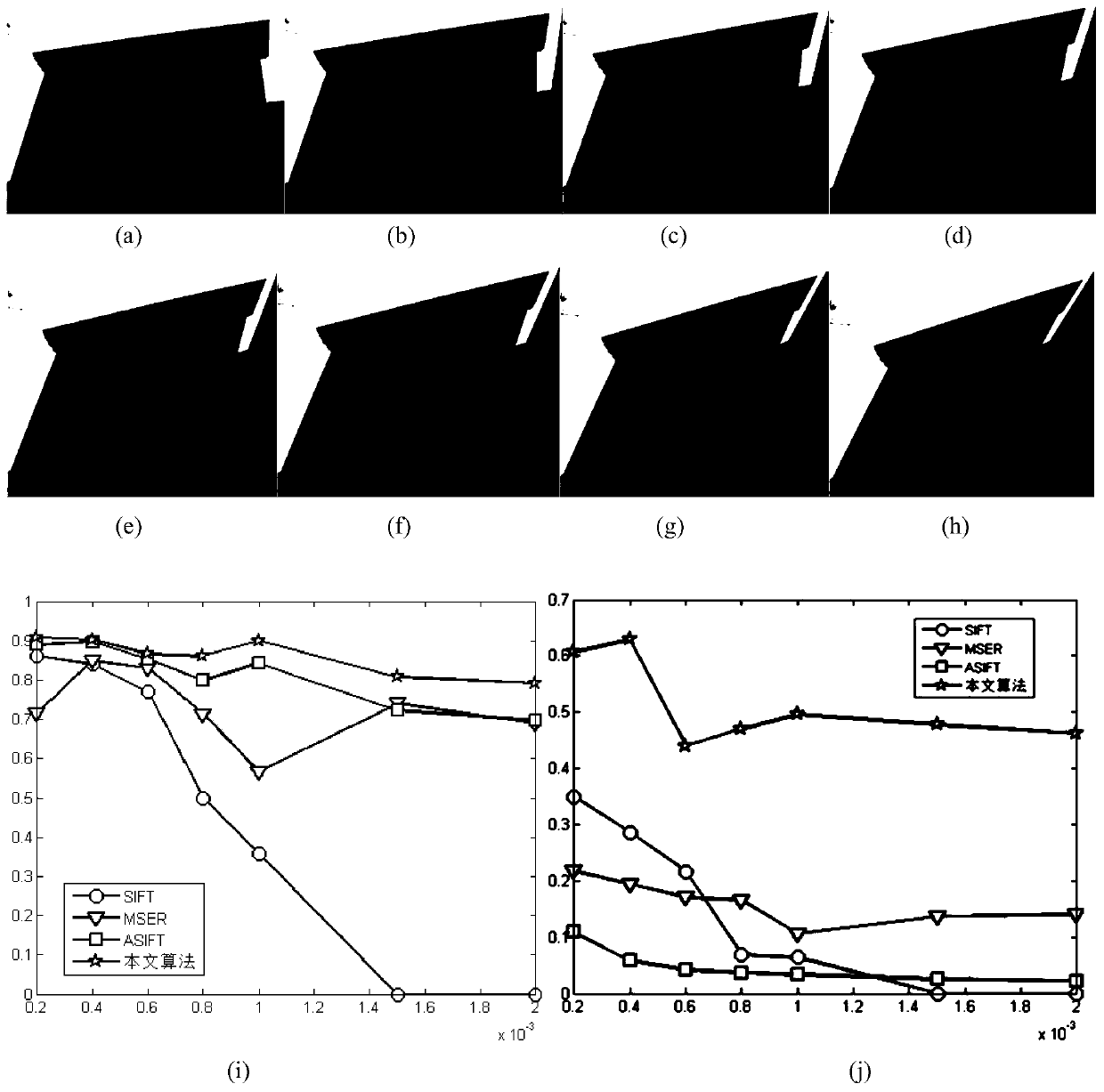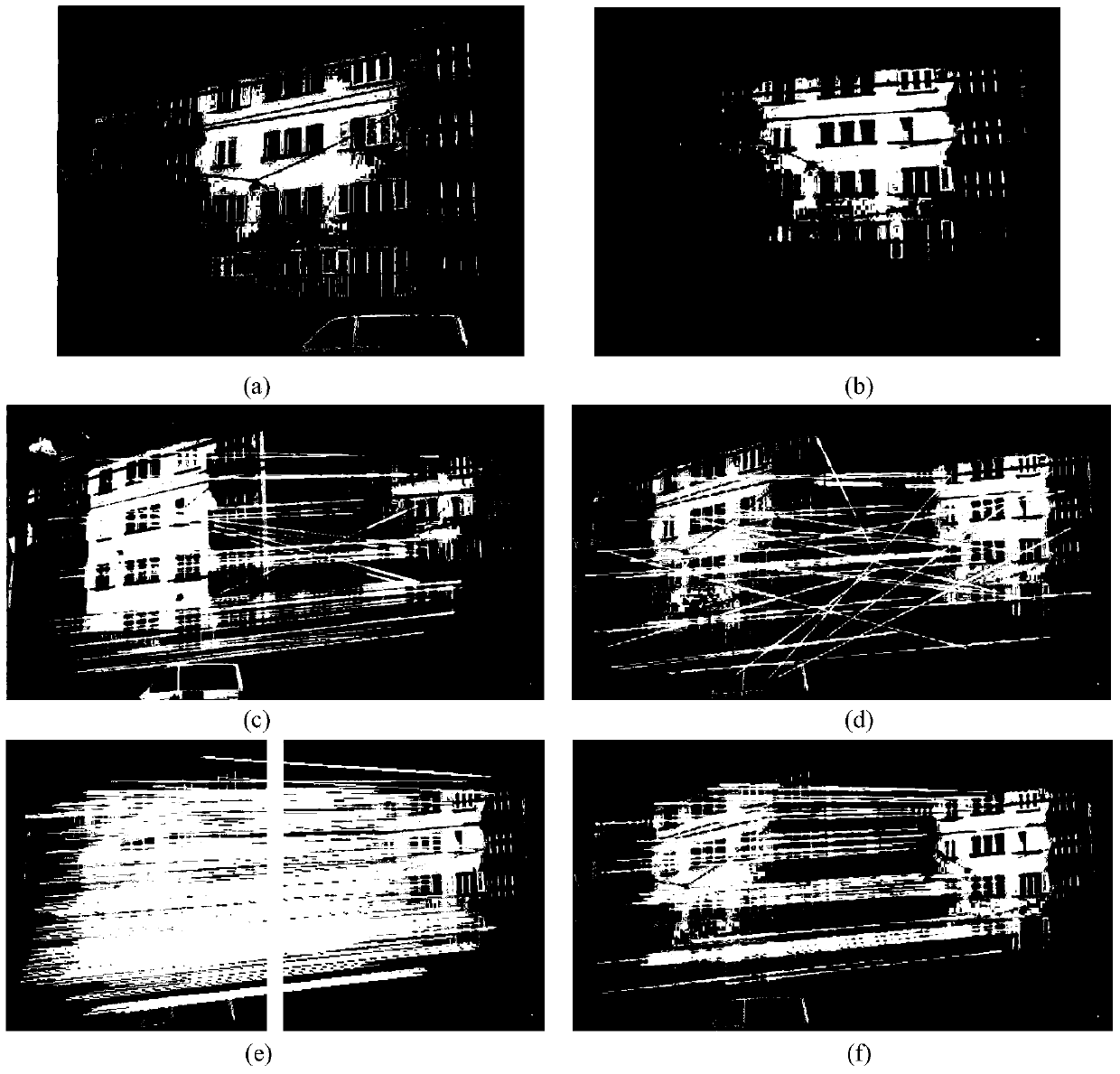Projective transformation image matching method based on transformation-invariant low-rank texture
A technology of projective transformation and matching method, applied in the field of projective transformation image matching, can solve the problem of inability to complete projective transformation image matching, etc., and achieves improvement of mismatched point pairs, high feature point repetition rate and correct matching rate, and high correct matching rate. Effect
- Summary
- Abstract
- Description
- Claims
- Application Information
AI Technical Summary
Problems solved by technology
Method used
Image
Examples
Embodiment Construction
[0030] specific implementation
[0031] The present invention will be further described below in conjunction with the accompanying drawings.
[0032] Refer to attached figure 1 , the implementation steps of the present invention are as follows:
[0033] Step 1, input the reference image and the image to be matched.
[0034] Input two images with projective transformation taken from two different perspectives, one as the reference image A, and the other as the image to be matched B.
[0035] Step 2, perform low-rank texture region detection on the two input images respectively, and obtain the low-rank texture region U in the reference image A A and the low-rank texture region U in the image B to be matched B .
[0036] 2a) Rotate the reference image A and the image to be matched B respectively These three different angles, get three sets of images under different rotation angles
[0037] 2b) For the rotated reference image Carry out Canny edge detection and Hough tr...
PUM
 Login to View More
Login to View More Abstract
Description
Claims
Application Information
 Login to View More
Login to View More - R&D
- Intellectual Property
- Life Sciences
- Materials
- Tech Scout
- Unparalleled Data Quality
- Higher Quality Content
- 60% Fewer Hallucinations
Browse by: Latest US Patents, China's latest patents, Technical Efficacy Thesaurus, Application Domain, Technology Topic, Popular Technical Reports.
© 2025 PatSnap. All rights reserved.Legal|Privacy policy|Modern Slavery Act Transparency Statement|Sitemap|About US| Contact US: help@patsnap.com



